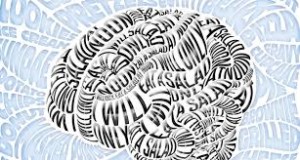It is one of the hardest conversations to have, and is unfortunately on the rise as one of the most modern diseases. Anorexia Nervosa is a type of eating disorder. People who have this disorder have an irrational fear of gaining weight. The ways in which they cope with this fear is to drastically limit the amount of food that they eat and become harmfully skinny. Anorexia Nervosa can apply to any type of person. The sample size for a lot of the studies conducted regarding this serious issue are administered over a large sample size of people.
Many people have written blogs about eating disorders and how they affect humans. I wanted to take a different approach and write about the way that the brains of those who develop an eating disorder work. It has always interested me to think about the different parts of the brain that trigger these degrading and hurtful thoughts in the minds of young struggling teens. A website I discovered talks about the personal experiences of those who have dealt with the struggles of having an eating disorder, Eva says “It’s like having somebody in your head telling you that everything you do is wrong, like you can’t please it no matter what you do. If you go for a walk, you’ve not walked far enough. If you eat a lettuce leaf you still should have not had it. It’s like nothing you can do is good enough for it.” Although extremely unfortunate, these are the thoughts of many that struggle with the same problem, Anorexia Nervosa.
An observational study was conducted at Cambridge University called the “Eating Attitudes Test.” This test reported on the development of a 40-item measure that has to do with the symptoms experienced in patients with anorexia nervosa. The purpose of this study is to develop and confirm a rating scale that may be useful in dissecting the attitudes and behaviors found in those with anorexia nervosa, and to also use the information concluded from this study as an index or resource to help the score, diagnosis, and study of this specific eating disorder. The scale that was used, EAT, is presented in an easily administered and scored manner. EAT is a 6-point, forced choice, self-reported format. The subjects of this experiment are 2 groups of female anorexia nervosa patients and female control products, along with female obese, clinically recovered patients, and male subjects as other ways of validating the information. Scientists developed 35 pre-liminary items that closely reflected a wide range of the types of attitudes and behaviors that could be found in those who were reported anorexic. The subjects were instructed to choose whether the item applied ‘very often’, ‘often’, ‘sometimes’, ‘rarely’ or ‘never’. Patients would receive a score of 2 if they responded in the extreme anorexic direction, a score of 1 for the similar but not as extreme response, and no score was given to those who responded with a non-anorexic reply. The graph below shows the scores of these questions represented by mean on the y axis and the type of person on the x axis.
The reason I am sharing this study with you is because it scores and clearly displays that the attitudes, behaviors, and thoughts of those with an eating disorder are drastically different than those who do not struggle with the disorder. This is an indication that something needs to be done, and scientists must get to the bottom of it. Anorexia nervosa affects both the body and the mind. As previously stated, I have always had interest in the way the brain works when it comes to eating disorders. Mechanisms that could be used to prevent this type of behavior vary. For example, one could see a doctor for help.
“Neuropsychological and structural brain changes in anorexia nervosa before and after refeeding” is another study that was conducted at Cambridge University. This study specifically dealt the brain appearances of 46-in patients with Anorexia Nervosa compared with 41 normal weight controls. The way that these images were obtained is through Magnetic Resonance Imaging, or MRI. In-patients were separated by sex, age, intelligence and education, and the study was based on who could gain at least 10% of their body weight back, if they completed this task the in-patients were retested and rescanned, along with the controls who retested on similar instances. The Anorexia Nervosa patients showed poor performance on the measures of attention, memory, and visuospatial ability, flexibility and learning. Following the treatment, or refeeding of the in-patients, the only improved tasks that the Anorexia Nervosa had were those assessing attention. Studies state that the MRI’s show that copious anorexics had “enlarged lateral ventricles and dilated sulci on both cortical and cerebellar surfaces, but no dilatation was evident for the third and fourth ventricular measures.” Although some improvements were found on the data after the study was conducted, there were still differences that remained between the two types of patient. The results of the study explain that, “the relationships between morphological brain changes and cognitive impairments were weak. Lower weight, but not duration of illness, was associated with poorer performance on tasks assessing flexibility/ inhibition and memory, and with greater MRI ventricular size.”
Knowing a little bit about how the brain of an anorexic works, in comparison to a normal weight human is educating in that it allows scientists to study the part of the brain, or some of the causes of the deformation in the brain, to try their best to help these struggling patients. Anorexia is a major problem that many face today and the earlier it is treated, the better the chances someone can recover it. If anorexia is left untreated it can lead to and result in starvation, and serious health problems such as bone osteoporosis, kidney damage or failure, and heart problems, which can cause death as an extreme result.


